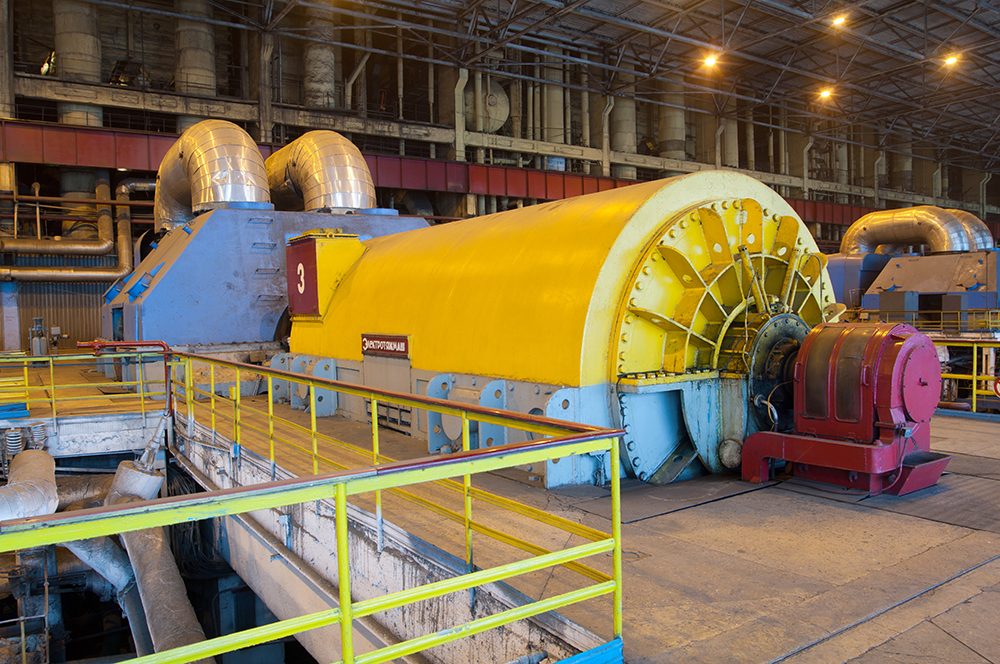Steam turbine maintenance and operation

Steam turbine operation and performance require the correct steam pressure at the turbine inlet and high steam quality (steam without condensate entrapment) to ensure high turbine reliability. The following addresses best practices for optimal steam system turbine maintenance and operation.
Click Here To Download the Article PDF
Steam Quality Steam must be of the highest quality. Condensate entrapment in the steam supply increases turbine steam rates, reduces the steam turbine efficiency, and causes erosion of steam turbine components (governor valves, blading, and nozzles). Insulating the steam supply lines and components (valves, casing, etc.) helps prevent steam from releasing latent energy, which causes condensation to occur in the steam system.
STEAM BACKPRESSURE TURBINES
Steam turbines are one of the oldest and most versatile prime mover technologies still used in industry to drive electric generators, pumps, fans, and different types of compressors. Steam turbines have been used to generate power for about 100 years, after plants began to replace their older reciprocating steam engines. The steam turbine design provided higher efficiencies, was more versatile, and, in many situations, was more economical than buying power from outside sources.
Steam turbines can range in size from very small (10 HP) with a single stage of nozzles up to very large units with many stages that produce thousands of horsepower.
DEFINITION
A steam backpressure turbine is a device that converts the thermal energy of steam into mechanical work. A steam turbine fundamentally consists of a rotor carrying blades, the casing in which the rotor turns, and the nozzles through which the steam is allowed to expand.
How Steam Backpressure Turbines Work
First, the heat energy of the steam (Btu/lb.) is converted into kinetic energy (velocity) by expanding the steam isentropically from a higher pressure to a lower pressure through a nozzle. Steam emerges from the nozzle at a high velocity
Second, the velocity of the steam is converted into mechanical work by directing the steam against the blades mounted on a turning rotor. A “stage” typically consists of one set of stationary nozzles and one or more rows of rotating blades immediately downstream of the nozzles.
Steam turbines are designed to meet a wide array of applications and performance specifications. Steam turbines for a large utility operation may be designed with several pressure casings and complex design types that maximize the efficiency of the steam thermal cycle in the power plant. In industrial process applications, steam turbines are generally smaller and operate at a lower steam pressure; therefore, the design is less complicated for reliability and cost reasons.
The backpressure turbine design allows the plant to capture mechanical work while providing a very effective way of reducing steam pressures for different process requirements.
Steam turbines capture the mechanical work ability of steam, and they extract steam at different stages to supply different pressures to the processes in the plant. Since the exhausted steam is also used for process applications, the thermal efficiency of a steam turbine system is very high. Boilers can burn different fuels such as black liquor, wood waste, sawdust, fuel oil, coal, methane, etc. This provides great flexibility when using a steam turbine in a plant operation.
Advantages of Backpressure Steam Turbines What are the advantages of backpressure steam turbines?
- They can provide mechanical work and reduce steam pressures for the plant process applications.
- They can operate at different RPMs, unlike an electrical motor; thus, they can be directly coupled to a pump, fan, or other device without a reduction gear system.
- Boilers can use different fuels to generate the steam for the steam turbine.
- Backpressure steam turbines can accommodate different steam pressures from very high to low steam
- Steam temperatures are not a problem and can be dealt with safely.
- Backpressure steam turbines use simple rotary motion, which eliminates the old style of a reciprocating motion and the
- These turbines extract steam for different steam pressures required by process applications very efficiently.
- They can use superheated or saturated steam for the motive
Applications
Steam backpressure turbines are used as the prime movers in industry in the following applications:
- Compressors (air and gases)
- Machine drives
- Blowers
- Pumps
- Electric generators
CALCULATIONS
The output power of the turbine depends on the mass flow rate of steam, the turbine efficiency, and the difference in enthalpy between the inlet and the exhaust of the turbine. In practice, the enthalpy of steam at the exhaust is determined by the backpressure and the turbine efficiency.










